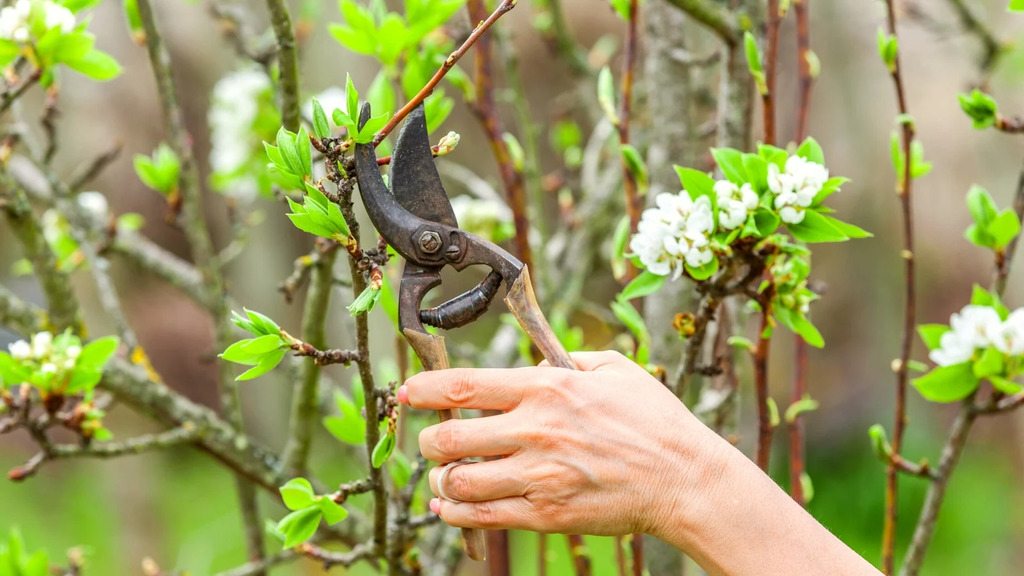Explore this post with:
Tree pruning is a key, yet often overlooked, part of garden maintenance. Taking care of trees is important for keeping a garden healthy and attractive. Proper tree care not only makes the garden look better and last longer, but it also supports a healthy ecosystem for other plants. Experts say that regular pruning can prevent diseases, reduce the risk of weak branches, and encourage healthier growth. This practice is vital for the overall health of the garden.
In this article, we’ll look at the different aspects of tree pruning that help create a vibrant and flourishing garden. We’ll cover how tree pruning Seattle promotes health and strong growth and enhances the safety and beauty of outdoor spaces, while providing practical tips. You’ll learn how strategic pruning can encourage new growth, improve fruit yields, and reduce potential hazards. Plus, we’ll explain the best timing and techniques for different tree species to ensure your pruning efforts are effective.
Enhancing Tree Health
Regular pruning is essential for keeping trees healthy. It involves cutting away dead or diseased branches to stop the spread of diseases and pests. Removing these problem areas helps the tree stay strong and better handle tough weather or nutrient shortages. This practice not only prevents disease but also promotes new growth, leading to a healthier tree.
When disease and pests are controlled, trees can put more energy into growing stronger branches and roots. With these benefits, regular pruning is a key part of tree care, ensuring trees stay healthy, vibrant, and less vulnerable to their environment’s challenges.
Promoting Growth and Development

Pruning trees strategically promotes new growth and strengthens existing branches. When light and air can pass through the tree canopy, it helps the tree develop healthily, leading to more efficient fruit production. This careful pruning ensures a balanced structure, giving each branch enough sunlight and air.
As a result, trees become stronger, with better-developed branches and a larger root system. By removing crowded or weak branches, resources are directed to healthier parts of the tree, leading to better growth and productivity. This practice not only improves the tree’s overall health and strength but also increases fruit yields, making pruning an essential part of tree care.
Aesthetic Benefits
Pruning helps your garden’s health and growth while also making it look better by keeping trees in their desired shape and size. Well-pruned trees add elegance and can greatly improve the overall appearance of your outdoor space.
By shaping the canopy and removing unattractive branches, pruning gives a cleaner and more polished look. This careful attention turns ordinary trees into stunning focal points that catch the eye and blend well with other garden elements. As a result, your garden becomes a more inviting and beautiful retreat, showcasing the skill of thoughtful pruning.
Safety Considerations

Ensuring safety is a major reason for tree pruning. Cutting off weak or overhanging branches can greatly lower the risk of accidents and property damage, especially during storms and high winds. Pruning also keeps trees from blocking power lines, buildings, or sidewalks, reducing the likelihood of electrical outages and structural damage.
This preventive step is necessary for the safety of both people and animals and helps maintain the strength and longevity of nearby structures. By managing potential hazards early, pruning makes outdoor spaces safer and more secure, emphasizing its importance beyond just the health and appearance of trees. Additionally, well-pruned trees can improve property value and curb appeal.
Timing and Techniques
Knowing when and how to prune trees is key to keeping them healthy. The best time to prune depends on the type of tree and your goal. Generally, winter is ideal for most trees because they are dormant, which reduces stress and the risk of diseases. However, flowering trees should be pruned right after they bloom to promote healthy growth for the next season.
Using the right pruning techniques is just as important. Making clean cuts at the correct angles prevents damage and encourages strong regrowth. Different methods, like crown thinning, crown raising, and crown reduction, each have specific purposes. Crown thinning improves light and air flow, crown raising removes lower branches to create space below, and crown reduction lowers the tree’s height or spread, which is useful for smaller areas.
Conclusion
Maintaining trees through regular pruning is vital for a thriving garden. This practice not only enhances the aesthetic appeal of outdoor spaces but also supports tree health by preventing diseases and promoting robust growth. Pruning encourages new development, improves fruit yields, and ensures safety by reducing the risk of weak branches and potential hazards. By mastering the timing and techniques suited to different tree species, gardeners can maximize the benefits of pruning. Ultimately, thoughtful pruning leads to healthier, more attractive trees and a safer, more enjoyable garden environment.
In Case You Missed It!
About the Author: Nishant Desai
Nishant Desai has over 8+ years of experience in SEO and blogging. His blogging expertise can organically increase online visibility and traffic for blogs and websites. With his SEO expertise, he has already contributed to iGeeksblog, Firstsportz, and Firstcuriosity. In addition, he can create content strategies, conduct keyword research, publish optimized blogs, and resolve technical issues.




